Welcome
Dear Colleagues,
It is with great pleasure that, in the name of the Organizing Committee, I invite you to participate in the “11th International Meeting of the Portuguese Carbohydrate Group – GLUPOR 11 – and 6th Iberian Carbohydrate Meeting” to be held in the Polytechnic Institute of Viseu, Portugal from September 6 to September 10, 2015.
The symposium is an initiative of the Portuguese Chemical Society (SPQ) and the Portuguese Carbohydrate Group together with the Spanish Royal Society of Chemistry (RSEQ) and the Spanish Carbohydrate Group.
We hope that the meeting will be an opportunity for the participants to establish fruitful cooperations in the area of carbohydrates and to contribute to discussions in the fields of the different basic and applied aspects of glycosciences. We invite all experts from different fields of glycoscience such as chemistry, biology, biotechnology and medicine, to provide their contribution on the following topics:
- Synthesis, structure and analysis
- Biotechnology and glycomics
- Glycobiology of disease and pathogenesis
- Medicinal and biomolecular chemistry
- Carbohydrates in food and agriculture
- Other applications of carbohydrates
Viseu's history spans millennia, the origins of the city date back to the Celtic period. In the second century BC, Viriathus, the rebel leader of the Lusitanians, is said to have lived in what is today Viseu – his monument is depicted on the Symposium banner. During the Roman occupation of Iberia important roads were crossing in Viseu as still evidenced by the old milestones.
Looking forward to welcoming you in beautiful Viseu,
Dulcineia Ferreira Wessel
Chair
Committees
Scientific Committee
Amélia Pilar Rauter, University of Lisbon, Portugal
Ana Paula Esteves, University of Minho, Portugal
Artur Silva, University of Aveiro, Portugal
Celso Reis, University of Porto, Portugal
Dulcineia Ferreira Wessel, Polytechnic Institute of Viseu, Portugal
Fernando Milheiro Nunes, University of Trás-os-Montes and Alto Douro, Portugal
Francisco Corzana López, University of Rioja, Spain
Hans Peter Wessel, University of Aveiro, Portugal
Helena Gil, University of Coimbra, Portugal
Jesús Jiménez-Barbero, Center for Cooperative Research in Biosciences, Spain
Jesús Manuel Peregrina García, University of Rioja, Spain
Joachim Thiem, University of Hamburg, Germany
Jorge Justino, Polytechnic Institute of Santarém, Portugal
José Albertino Figueiredo, University of Beira Interior, Portugal
Jose Manuel García Fernández, University of Sevilla, Spain
Júlia Costa, New University of Lisbon, Portugal
Manuel António Coimbra, University of Aveiro, Portugal
Maria Manuela Estevez Pintado, Catholic University of Porto, Porto, Portugal
Mário Monteiro, University of Guelph, Canada
Patrick Rollin, University of Orléans, France
Ramon Estévez, University of Santiago de Compostela, Spain
Sergio Castillón, University Rovira i Virgili, Tarragona, Spain
Slawomir Jarosz, Polish Academy of Sciences, Poland
Tana Lubeka Canda, University of Agostinho Neto, Luanda, Angola
Organizing Committee
Dulcineia Ferreira Wessel, Polytechnic Institute of Viseu, Portugal (Chair)
Amélia Pilar Rauter, Universidade de Lisboa, Portugal
Fernando Milheiro Nunes, Universidade de Trás-os-Montes e Alto Douro, Portugal
Hans Peter Wessel, Universidade de Aveiro, Portugal
Jesús Héctor Busto Sancirián, Universidad de la Rioja, Spain
Jesús Manuel Peregrina García, Universidad de la Rioja, Spain
Manuel António Coimbra, Universidade de Aveiro, Portugal
M. Isabel Ismael, Universidade da Beira Interior, Covilhã, Portugal
Sergio Castillón, University Rovira i Virgili, Tarragona, Spain
Local Organization
Agrarian School of Polytechnic Institute of Viseu
SPQ Secretariat
Leonardo Mendes
Cristina Campos
Scientific Program
Contributions in the field of glycoscience will be presented as plenary lectures, invited lectures, selected oral communications and posters.
Meeting Topic Areas
- Synthesis, structure and analysis
- Biotechnology and glycomics
- Glycobiology of disease and pathogenesis
- Medicinal and biomolecular chemistry
- Carbohydrates in food and agriculture
- Other applications of carbohydrates
Poster Sessions
There will be ample time for poster presentations and discussions.
Prizes will be awarded to the best posters selected by the Scientific Committee.
Publication
The abstracts of the symposium contributions will be published in the Glupor11 Book of Abstracts.
Language
English will be the official language of the Meeting.
Speakers
Javier Can᷉ada - Biomolecular Recognition of Carbohydrates studied by NMR
CSIC Madrid Spain
Pierre Alexandre Driguez - Challenges associated to the industrial scale synthesis of idrabiotaparinux, a pentasaccharide derived from heparin
Sanofi, France
Beat Ernst - Druggability of Lectins- Mission possible?
University of Basel, Switzerland
Jose Alexandre Ferreira - Changes in protein glycosylation: biological implications for bladder cancer progression and dissemination
Portuguese Oncology Institute of Porto, Portugal
George Fleet - Towards sugar mimics for N-acetylhexosamines and rhamnose: not always as expected
University of Oxford, UK
Anne Imberty - Lectins from bacteria and fungi: therapeutical targets and research tools
CERMAV-CNRS, France
Bruno Sarmento - Chitosan-based Systems for the Delivery of Biopharmaceutical Drugs
Advanced Health Sciences Institute-North, Portugal
Knud Jensen - Chemoselective carbohydrate chemistry for chemical biology
University of Copenhagen, Denmark
Filipa Marcelo - Unraveling the structural details of carbohydrate-protein interactions: A NMR and Molecular Modeling perspective
New University of Lisbon, Portugal
Cristina Nativi - The cycloaddition way to synthetic immunostimulants
University of Florence, Italy
Laura Nystroem - Possibilities and challenges of cereal beta-glucan oxidation
ETH Zurich, Switzerland
Angelina Palma - Unravelling glucan recognition systems by glucome-derived ‘designer’ oligosaccharide microarrays
New University of Lisbon, Portugal
Serge Perez - Building, Seeing and Playing with Complex Glycans
CNRS Grenoble, France
Christoph Röhrig - Remarkable properties of human milk oligosaccharides – what can we learn from mother nature?
Glycom A/S, Denmark
Javier Rojo - Exploring new carbohydrate multivalent systems as anti-infective agents
CSIC Seville, Spain
Lisete Silva - Insights into H. pylori lipopolysaccharide structural domains using a pathogen carbohydrate microarray
Imperial College London, United Kingdom
Valentin Wittmann - Recent Applications of the Inverse-Electron-Demand Diels-Alder Reaction in Glycobiology
University of Konstanz, Germany
Nuno Xavier - Design, Synthesis and Study of the Biological Potential of Novel types of Nucleoside, Sugar Phosphate and Nucleotide Analogs
University of Lisbon, Portugal
Samir Zard - In Search of New Reactions for Organic Synthesis. Some Interesting Applications in Carbohydrate Chemistry
Ecole Polytechnique, France
Registration
Registration Fees | ||||
| Category | Price before June 30th 2015 (€) | Price after June 30th 2015 (€) | ||
|---|---|---|---|---|
| SPQ and RSEQ members | non-members | SPQ and RSEQ members | non-members | |
| Normal | 220 | 300 | 320 | 400 |
| Bachelor, Master and PhD | 120 | 140 | 170 | 190 |
| Accompanying person | 140 | 140 | 190 | 190 |
The registration fee includes:
Accompanying person fee: includes lunches, welcome reception and symposium dinner
Abstract submission
Deadline for abstract submission: June 16th, 2015
Please note that for each registration only one abstract is considered.
Abstract Guidelines
A one A4 page abstract, prepared according to these instructions, should be submitted online. Please do not forget to choose your topic:
Contributions on the above mentioned topics are welcome. Oral communications, selected by the Scientific Advisory Board, 15 minutes; Posters: 90 cm width x 120cm heigh
Abstract template Personal Area/abstract submission
Key Dates
- Deadline for abstract submission: 16th June 2015
- Decision notification: 25th June 2015
- Reduced fee payment: 30th June 2015
About Viseu
Viseu is a medium-sized city located in the “heart” of Portugal. Its urbanity contrasts with the surrounding rural areas with ancient villages and picturesque sites.
Viseu is also famous for its many beautiful and well maintained gardens and therefore known as “Garden City”.
There are museums with historic monuments in the old town such as the “Grão Vasco” museum where the paintings of the famous national artist are displayed after whom the museum was named. Another landmark is the “Cava de Viriato”, a roman octagonal camp that extends over 38 acres. It is a national monument since 1910. According to a legend, the warrior Viriathus, a Lusitanian hero, fought the Romans at this site.
From the city we can see the “Serra da Estrela”, the second highest spot of Portugal, and the Caramulo mountains.
Additional regional highlights are the protected designation of origin (PDO) products such as the Dão wines, the "Serra da Estrela" cheese and the "Bravo de Esmolfe" apple that make an outstanding gastronomic trilogy.
And by the way, speaking about carbohydrates, don’t forget to taste the "viriato", "pastel de feijão" (bean pastel) and "castanhas de ovos" (egg chestnuts), the traditional sweets from this region.
Visit the websites of the “Turismo do Centro” and “Câmara Municipal de Viseu” for more information, here you can also find a detailed list of events around town.
Travel
The Instituto Politécnico de Viseu can be easily reached by bus or by train from the airports Francisco Sá Carneiro in Porto or Portela in Lisbon. The Porto Airport is the best choice. The congress venue is in a 15 - 20 minute walking distance from the Viseu city center. The conference hotels are located within walking distance. Other options are taxi or the public bus transportation system Serviço de Transportes Urbanos de Viseu (buses) that cover the entire city.
By Air
From Porto Airport the best connection to Viseu is by bus via the bus terminal in Alexandre Herculano street (Rodoviária Beira Litoral, Garagem Atlantico, Rua Alexandre Herculano, 336-4000 Porto, Tel. +351 222052459). The bus terminal can be reached by taxi (ca. 20 €), by bus (2.50 €, http://www.transdev.pt/aeroportoporto/), or by Metro to the Bolhão or Batalha stations (Z4 Ticket, € 1.85) plus a 10 minute walk.
The Campanhã train station can be reached by metro from the airport. Trains to Mangualde take two to three hours.
From Lisbon Airport, it is possible to take a Taxi (about €10) or the Red line of Metro Lisbon, buying the Viva Viagem card (€0,50) along with the 1 hour Travel Ticket (€ 1.40), to reach the Oriente train station where there are bus connections to Viseu and train connections to Mangualde near Viseu. It is also possible to take the bus to Viseu from the Lisbon Sete Rios bus station that can be reached with the red line of Metro Lisbon to S. Sebastião and changing to the blue line to get to the Jardim Zoológico metro station.
By Bus
Buses run regularly from the Porto Atlantico terminal (1h45 journey for € 12.00), Lisbon (3h30 journey for €18.50), and all main cities in Portugal to Viseu. For more information on tickets and schedules go to Rede-Expressos.
By Train
Alfa Pendular, Intercidades and/or Regional trains connect Lisbon (3h30 to 4h journey – from €19.70 to €25.60), and Porto (2h to 3h journey – from €15.70 to €24.40) to Mangualde, near Viseu. For more information on tickets and schedules go to CP. Time tables for regular bus connections from Mangualde to Viseu (25 minute journey) can be found at Citi Express.
By Car
Viseu is an approximately 90 minute drive from the Porto airport or a 3h drive from Lisbon, respectively. The main highways are A1 and A25 from the north (Vigo, Oporto, Braga) or south (Faro, Lisbon, Coimbra), and A25 from the East. For more information about Portugal’s toll system go to Portaltool.pt .
Accommodation
| HOTEL NAME | Category | Single Room / Double Room € | Location |
Contact / webpage |
Please book by email |
|---|---|---|---|---|---|
| Montebelo Viseu Hotel | 5 * | 66 / 80 | Urbanização Quinta do Bosque, 3510-020, Viseu | +351 232 420 000 http://www.montebeloviseu.pt/ |
Please book by email reservasmontebelo@montebelohotels.com specifying the name of the Hotel and quote “Glupor 11” |
| Palácio dos Melos | 4 * | 52 / 62 | Rua Chão Mestre, 4, 3500-103, Viseu | +351 232 439 290 http://www.hotelpalaciodosmelos.pt |
|
| Moinho de Vento | 3 * | 28 / 39 | Rua Paulo Emílio, 13, 3510-098, Viseu | +351 232 424 116 http://www.hmoinhodevento.pt/ |
Please book by email: geral@hmoinhodevento.pt and quote “Glupor 11” |
| Avenida | 2 * | 40 / 50 | Avenida Alberto Sampaio, 1, 3510-030, Viseu | +351 232 423 432 http://www.hotelavenida.com.pt |
Please book by email geral@hotelavenida.com.pt and quote “Glupor 11” |
| Residencial Bela Vista | 2 * | 25 / 35 | Rua Alexandre Herculano, 510, 3500-035, Viseu | +351 232 422 026 http://residencialbelavista.com/ |
Please book by email geral@residencialbelavista.com and quote “Glupor 11” |
| Residencia de Estudantes do Instituto Politécnico de Viseu |
Students / No-students Double: 7,5 / 25 Single (without WC): 10 / - Single (with WC): 15 / 30 |
Av. Cor. José Maria Vale de Andrade s/n,Campus Politécnico Santa Maria, 3504-510 Viseu | |
Please book by email sas@pres.ipv.pt | |
| Pousada da Juventude de Viseu | Multiple: 12 Double (without WC): 25 Double (with WC): 27 |
Rua Dr. Aristides Sousa Mendes, Portal do Fontelo - 3500-033 Viseu | +351 232 413 001 www |
Please book by email viseu@movijovem.pt | |
Contacts Us
SPQ - Sociedade Portuguesa de Química - Secretariat/Payments/Billing
-
Av. da República, 45 - 3º Esq.
1050 - 187 Lisboa
Portugal
(+351) 217 934 637
General Information - Organization/Program
glupor11@chemistry.pt
Chairperson - Dr. Dulcineia Ferreira Wessel
-
Polytechnic Institute of Viseu - ESAV
Department of Food Industries
Quinta da Alagoa - Estrada de Nelas
3500-606 Viseu
Portugal
(+351) 917 331 329
General information
Insurance:
All conference attendees are advised to arrange private travel insurance. The conference organizers and committee accept no liability for personal accidents or damage to property. The organizing committee of GLUPOR11 reserves the right to amend and/or alter the conference program without prior notice.
Time Zone: The time zone in Portugal is GMT.
Water: Tap water in Portugal is drinking water!
Electricity: The local current is 220 AC and the connection is made by a two-pin plug. Traveller's from the USA will require a voltage converter. Travellers from the UK will require a plug adapter and this is best bought in the UK as they are hard to find (can try at the airport).
Currency, Banks and Post Offices: The national currency in Portugal is Euro. Banks are open from Monday to Friday between 8.30 am and 3 pm. Post offices are usually open between 8.30 am and 6 pm.
Exchange houses operate everyday between 9 am and 1 pm and from 2 pm to 7 pm.
Going out in Viseu: With your conference material you will find a city map and a brochure of Viseu with lots of necessary information.
Climate: In early September, the day time temperature in Viseu is 24 ºC on the average, rain is very unlikely.
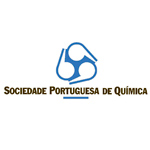


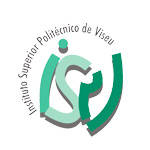
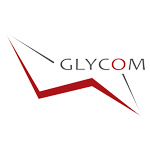
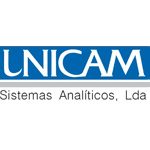
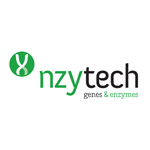
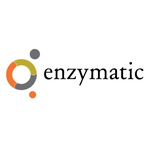
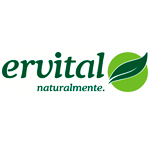
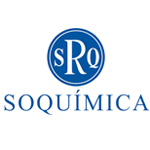
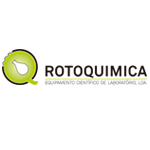





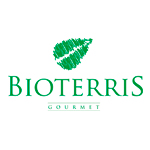
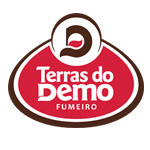




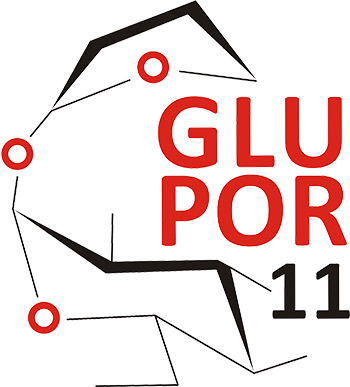 We acknowledge the cooperation of the designer Paulo Medeiros in the creation of the Glupor 11 logo. The designer was inspired by a chemical structure of a carbohydrate and its symbiosis with the octagonal geometry of the monument "Cava de Viriato" - depicted on Symposium banner - one of the most emblematic works of engineering land preserved in the Iberian Peninsula. The photo of the "Cava de Viriato" monument was taken by Catarina Oliveira.
We acknowledge the cooperation of the designer Paulo Medeiros in the creation of the Glupor 11 logo. The designer was inspired by a chemical structure of a carbohydrate and its symbiosis with the octagonal geometry of the monument "Cava de Viriato" - depicted on Symposium banner - one of the most emblematic works of engineering land preserved in the Iberian Peninsula. The photo of the "Cava de Viriato" monument was taken by Catarina Oliveira.
Social events for participants and accompanying persons
Welcome Cocktail at Dão Wine Manor House (September 6th)
In 1122, D. Maria Seseriquiz and her sister and children donated the Fontelo farm to the prelate D. Odório and the Cathedral of Viseu. On this property the construction of a palace, today the Dão Wine Manor House (“ Solar do Vinho do Dão”) started in the year 1399.
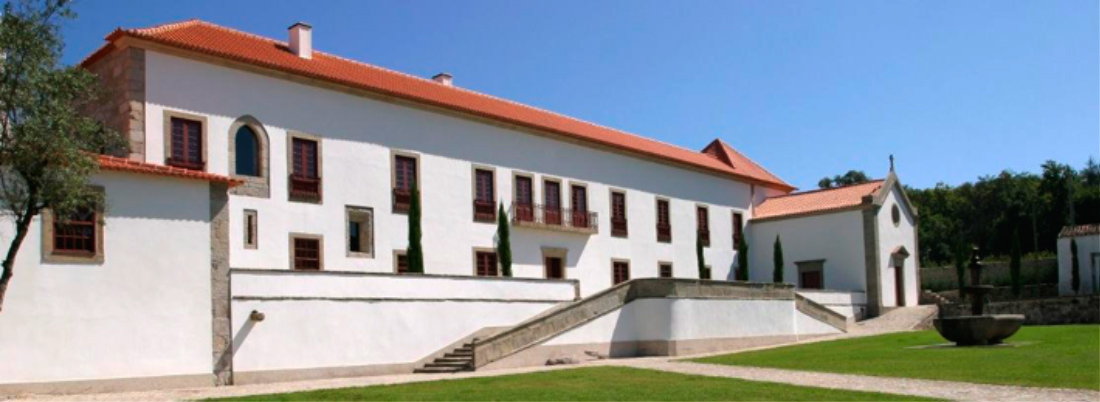

In 1926 the Town Hall took possession of the old palace and part of the land around Fontelo. The renovation of this building has been carried out jointly by the Viseu Town Hall and the Dão Regional Viticulture Commission. It is located in the Fontelo Park, east of the city, and 800 meters from the Viseu Cathedral and the Grão Vasco Museum.
Fontelo park is occupying a vast area of the city. It was part of the “Quinta do Paço dos Bispos” which had its greatest splendor in the sixteenth century with Bishop Miguel da Silva. The forest is rich in plant species and trees (chestnut and oak). In the lower area with agricultural potential Agrarian Station of Viseu was established that belongs to the Ministry of Agriculture. The remaining part represents the largest public green space in the city and has been used for the implementation of recreational facilities.
Guided tour at “Casa da Ínsua” an old manor house in the Beira Alta region (September 9th)
Situated in a beautiful countryside, surrounded by a luxuriant, legendary garden, stands a centuries old but meticulously restored, stately Baroque manor house named “Casa da Ínsua”. It has now been transformed into the charming 5 star Hotel Casa da Ínsua, one of the finest historical hotels in Portugal.

Casa da Ínsua is situated in the heart of an enormous estate, which in itself is a reason to visit. There are guided tours for different parts of the estate, including the garden, the vineyards and the winery, where you can follow the entire process of wine making.
Social program for accompanying persons
1) Visit of the ancient town of Viseu September 7th
A tour to the ancient city will be organized to visit the Cathedral, the Grão Vasco Museum and some other beautiful parts of the old town, namely the streets of traditional commerce, where you can find interesting old articles and enjoy a nice coffee.
Grão Vasco Museum gathers a considerable collection of the artist Vasco Fernandes, a famous 16th century painter, whose work is an example of the scholarship and excellence of Portuguese Renaissance. Other objects can be appreciated such as Portuguese faience, oriental porcelain and furniture. In the cathedral churchyard, one of the most interesting places in the old town, you will find, apart from the Cathedral and the museums, Misericórdia Church, the pillory and “Passeio dos Cónegos”. At Duarte Square you can see the statue of the King of Portugal (1391-1438). Continuing the visit we will reach Rossio, where you will be able to relax and enjoy green areas.
2) Visit of the linen museum in Calde September 7th
After a lunch break the linen museum will be visited. The museum is situated in an old manor house at Calde, a small village on the outskirts of Viseu. Calde is one of the few villages in the region of Viseu where the woman is still working the linen. It is a recreational and educational space that brings together all the assets related to the linen cycle and other aspects of traditional culture such as weaving.

3) Visit of Póvoa Dão September 8th
With more than seven centuries old and in full harmony with nature, the village of Póvoa Dão, located in Silgueiros, is the result of a pioneering project that was able to recover the old granite houses of the ancient village. Although the precise date of foundation is unknown, its existence was already documented in Afonsinas Inquiries, prior to 1258. The village is surrounded by a farm of about 120 hectares, and close to the river Dão (2.5 kilometers). It is also possible to walk along a pedestrian route, approved by the Federation of Camping and Mountaineering of Portugal. The footpath PR 8 VIS consists of four tracks with a length of about 6 km, passing through various natural places. After visiting the village a nice lunch will be organized in an old house of granite where in the past wine and olive oil were produced.

4) Visit of “Aldeia da Pena” September 8th
Aldeia da Pena is a typical village made of schist situated 20km from S. Pedro do Sul. It is located at the “Serra São Macário” at the bottom of a deep valley not accessible to cars. Is a mandatory passage point for nature lovers as it is at the heart of the valley and near the river Pena. “Serra de São Macário” is close to “Serra de Montemuro” and reaches a maximum altitude of 1053 m at “Castro Magaio”.